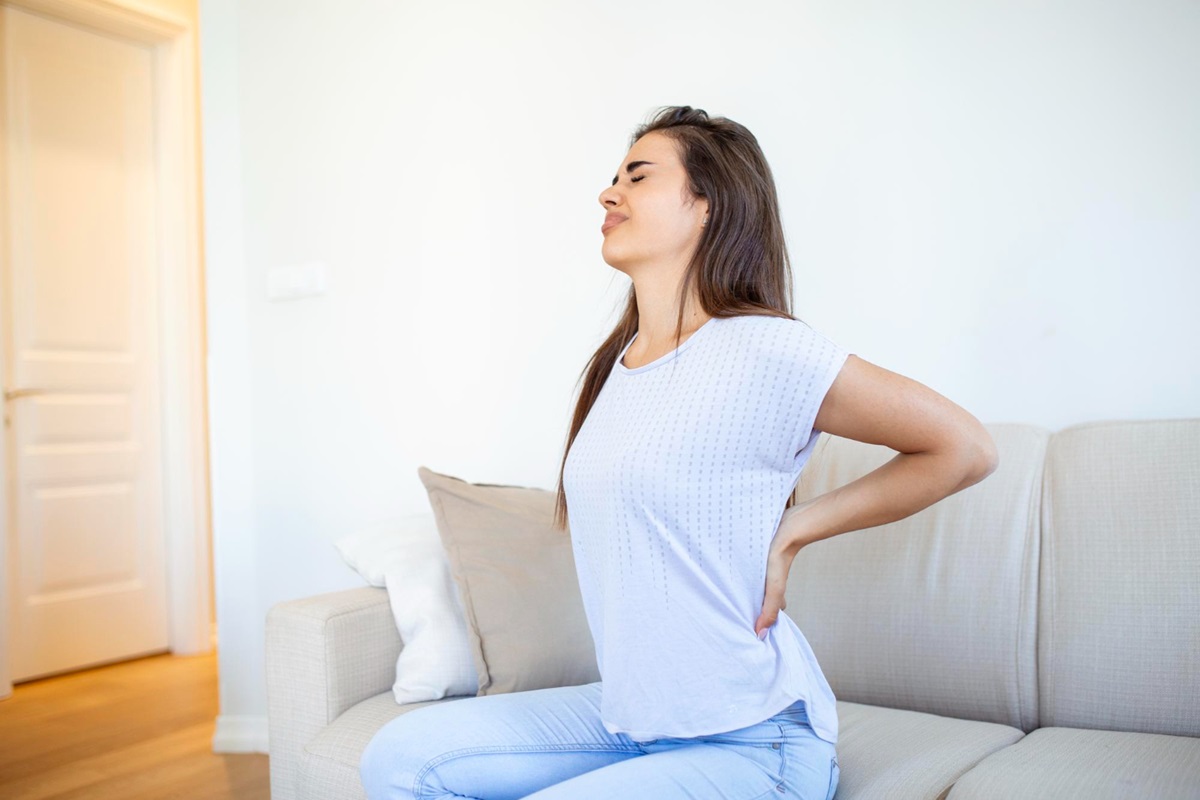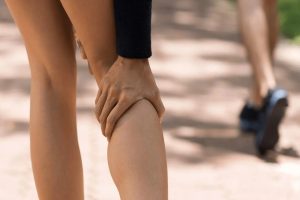Did you know that back pain is one of the most common complaints that lead people to visit their doctor? In fact, up to 80% of people will experience some form of back pain during their lifetime. While much attention is often given to lower back pain, middle back pain is also a significant issue …
Middle Back Pain: Causes, Treatment, & Prevention

Did you know that back pain is one of the most common complaints that lead people to visit their doctor? In fact, up to 80% of people will experience some form of back pain during their lifetime. While much attention is often given to lower back pain, middle back pain is also a significant issue for many individuals. Located in the thoracic spine, middle back pain can be just as disruptive and challenging to deal with. In this article, we’ll dive deep into the causes, symptoms, and effective treatments for mid back pain. We’ll also touch on preventative measures and when you should seek help from a medical professional. If you’ve been dealing with pain in middle of back, keep reading to find out more about potential causes, treatment options, and how to prevent it from recurring.
Symptoms of Middle Back Pain
Middle of back pain can manifest in various ways, depending on its underlying cause. Common symptoms include a dull, persistent ache in the middle of the back, sharp or stabbing pain that may radiate to the chest, ribs, or abdomen, and muscle spasms or tightness around the thoracic spine. Individuals may also experience difficulty standing or sitting for extended periods, particularly after activities like lifting, bending, or twisting, along with reduced range of motion and stiffness. If any of these symptoms persist, it’s essential to seek medical advice to determine the root cause and appropriate treatment for relief.
What Causes Middle Back Pain?
Middle back pain can arise from numerous factors, many of which are preventable with proper care. Poor posture, muscle strain, and spinal alignment issues are among the most common culprits. Other factors such as obesity, degenerative disc disease, or trauma can also contribute to discomfort in the middle of the back. Let’s take a closer look at some of the most common causes.
1. Poor Posture: The Silent Culprit
One of the leading causes of mid back pain is poor posture. The modern lifestyle of sitting at desks, working on computers, and looking down at smartphones can place excessive strain on the thoracic spine. Poor spinal alignment leads to muscle fatigue and discomfort, contributing to pain in middle of back. Over time, poor posture can exacerbate spinal stenosis, a condition that causes narrowing of the spinal column, and increase the risk of muscular strain. Ensuring proper posture is a simple yet effective way to prevent middle back pain from becoming a chronic issue.
2. Obesity: How Extra Weight Strains Your Spine
Being overweight or obese puts significant pressure on your spine, including the thoracic vertebrae. The excess weight, especially around the abdominal area, pulls the spine out of alignment, which can lead to chronic mid back pain. Furthermore, obesity can accelerate the development of degenerative disc disease, where the cushioning between the vertebrae wears down. Maintaining a healthy weight is key to reducing the strain on your spine and preventing back issues from arising.
3. Muscular Strain or Sprain: The Pain You Didn’t See Coming
Muscular strain is one of the most common causes of mid back pain. A sudden twist, awkward movement, or lifting something too heavy can overstretch or tear the muscles in the middle of your back. This results in pain, stiffness, and muscle spasms. Overuse injuries, repetitive movements, or prolonged sitting can also contribute to muscular strain in the thoracic spine area.
4. Accidents and Injuries: From Falls to Car Crashes
Trauma, such as falls or car accidents, can cause fractures in the thoracic vertebrae or damage the surrounding muscles, leading to middle back pain. Fractured vertebrae or injuries to the spinal cord can result in significant discomfort and may require advanced medical treatment, such as surgery, to repair the damage. If you’ve recently experienced an injury or trauma, it’s important to seek immediate medical attention to prevent further complications.
5. Herniated Discs: When the Cushion Between Your Bones Slips
The discs between your vertebrae act as shock absorbers, providing cushioning and flexibility to the spine. If one of these discs in the thoracic spine herniates or slips out of place, it can press against surrounding nerves, causing sharp or radiating pain in the middle of the back. This condition may require medical interventions such as imaging tests, like an MRI scan, to assess the extent of the damage and determine the appropriate treatment, which could include physical therapy or in severe cases, surgical procedures like laminectomy or spinal cord decompression.
6. Arthritis and Aging: Why Wear and Tear Hurts
Arthritis, especially osteoarthritis, is another common cause of mid back pain. As we age, the cartilage in the spine deteriorates, leading to bone-on-bone friction and inflammation in the thoracic vertebrae. This wear and tear can cause pain, stiffness, and reduced flexibility in the middle of the back. The condition can also lead to other issues such as spinal alignment issues or the narrowing of the spinal canal, which is known as spinal stenosis.
7. Osteoporosis: The Hidden Bone Weakness
Osteoporosis weakens bones, making them more susceptible to fractures. In the spine, osteoporosis can lead to vertebral compression fractures, causing severe pain in the middle of the back. If left untreated, these fractures can worsen, leading to permanent spinal deformities and long-term pain. Regular bone density tests can help detect osteoporosis early, preventing further complications.
8. Mental Health: Can Stress Cause Back Pain?
Mental health challenges such as stress, anxiety, and depression can contribute to middle back pain. Stress can cause the muscles in the back to tense up, leading to discomfort or pain. Additionally, individuals with mental health challenges may experience chronic fatigue or muscle tightness, which can exacerbate musculoskeletal pain. Addressing the psychological factors contributing to pain can be an essential part of managing and relieving mid back pain.
9. Kidney Problems: When Back Pain Isn’t Just About the Spine

Sometimes, pain in the middle of the back may not be related to the spine at all. Kidney issues, such as infections, kidney stones, or even a kidney infection, can cause pain that radiates to the middle back. If back pain is accompanied by symptoms like fever, pain while urinating, or changes in urine color, it could be a sign of a kidney problem that requires immediate medical attention.
10. Scoliosis and Spinal Abnormalities
Scoliosis, a condition where the spine curves abnormally, can cause mid back pain. The abnormal curvature of the spine can place pressure on muscles and nerves, leading to discomfort and pain. Other spinal abnormalities, such as congenital deformities or vertebral misalignments, can also lead to mid back pain and require treatment from a specialist, such as a chiropractor or orthopedic doctor.
11. Tumors: The Rare but Serious Cause
Although rare, tumors can develop in or around the spine, leading to pain in the middle of the back. These tumors can press on the spinal cord or nerves, causing persistent discomfort. If the pain is unexplained, severe, or accompanied by other symptoms like weight loss or neurological changes (e.g., tingling or numbness), it’s important to consult a doctor for further investigation.
When Middle Back Pain Could Be a Warning Sign
While most cases of mid back pain are related to minor issues such as muscle strain or poor posture, there are instances where back pain could signal a more serious underlying health condition. It’s crucial to recognize the warning signs that might indicate a more significant problem. In some cases, pain can be referred from internal organs, such as the kidneys or heart, or may be associated with neurological issues. Ignoring these symptoms can lead to complications, so it’s important to consult with a doctor for an accurate diagnosis.
Pain When Breathing: Should You Be Concerned?
Pain that worsens with deep breaths could indicate a lung problem, such as pneumonia or pleurisy, which causes inflammation in the lining of the lungs. It may also be a sign of a rib fracture or inflammation in the chest, particularly if trauma or injury occurred. If you experience chest pain, difficulty breathing, or a burning sensation along with mid back pain, it’s vital to seek emergency medical help immediately. These symptoms could point to a serious condition, such as a pulmonary embolism or lung infection, which requires urgent care.
Back Pain After Eating: A Sign of Digestive Issues?
Middle back pain that occurs after eating may point to digestive issues, such as pancreatitis, gallstones, or acid reflux. These conditions can cause pain that radiates from the abdomen to the middle of the back, leading to discomfort after meals. Other digestive issues, such as ulcers or a blocked bile duct, can also cause similar symptoms. If your back pain is accompanied by nausea, vomiting, changes in bowel movements, or unexplained weight loss, it’s essential to consult a doctor to rule out digestive problems.
Middle Back Pain with Chest Pain: When to Call 911
If you experience chest pain along with middle back pain, this could be a sign of a heart attack or another life-threatening condition, such as an aortic dissection or pulmonary embolism. In these cases, it’s crucial to seek immediate medical care, as these conditions can escalate rapidly and become fatal. Never ignore the combination of back pain with chest pain, as it can indicate a serious problem that requires emergency attention. Immediate intervention can make the difference between life and death, so don’t hesitate to call 911.
How is Middle Back Pain Diagnosed?
Diagnosing the cause of middle back pain typically involves a physical exam, diagnostic tests, and imaging techniques. Your doctor will work to pinpoint the source of your discomfort, which may include issues with muscles, bones, nerves, or organs. A thorough diagnosis is essential for addressing middle back pain effectively. As noted by the Mayo Clinic, a comprehensive evaluation that includes physical exams, imaging tests, and nerve studies helps pinpoint the exact cause of the pain. Once the source is identified, physical therapy plays a pivotal role in recovery by strengthening key muscles, improving flexibility, and correcting posture. Consistent practice of these exercises not only alleviates discomfort but also helps prevent recurrence, allowing individuals to remain active without worsening their symptoms.
Physical Exam: What Doctors Look For
A thorough physical exam is the first step in diagnosing mid back pain. During this examination, your doctor will evaluate your posture, range of motion, and muscle strength. They may apply pressure to various areas of your back to assess tenderness or inflammation, checking for signs of muscular strain or skeletal abnormalities. The goal is to determine if the pain is muscular, skeletal, or nerve-related. This helps your doctor decide whether further diagnostic tests, such as imaging, are needed to confirm the cause.
Imaging Tests: X-Rays, MRIs, and When You Need Them
Imaging tests like X-rays, MRIs, or CT scans can help detect structural problems such as fractures, herniated discs, or degenerative disc disease. An MRI scan is particularly useful for viewing soft tissues and detecting nerve compression, while X-rays are better for assessing bone-related issues. These tests can also reveal conditions like spinal stenosis or scoliosis, which can lead to chronic back pain. If there is any concern about nerve damage or compression, your doctor may suggest an MRI to get a more detailed look at the spine and surrounding tissues.
Other Tests: Ruling Out Organ-Related Causes
If the cause of your back pain is suspected to be related to internal organs, such as kidney issues, blood tests, ultrasounds, or even neurological tests might be required. Ruling out underlying health conditions is crucial in determining the appropriate treatment plan. If your doctor suspects a condition like pancreatitis or gallstones, further testing will help confirm the diagnosis. These tests are particularly important when symptoms suggest that the back pain may be a referred pain from internal organ dysfunction.
Relief for Middle Back Pain: What Actually Works?
Once a diagnosis is made, there are several treatment options available to help relieve pain in the middle of the back. These treatments can range from home remedies and exercises to more advanced medical interventions. If your back pain persists, seeking professional help can be highly beneficial. With the right treatment plan, including targeted exercises and therapies, you can relieve back pain with expert therapy, which focuses on both immediate pain relief and long-term prevention.
Home Remedies to Ease the Ache
To ease middle back pain, try using heat or cold packs and taking over-the-counter pain relievers like ibuprofen or acetaminophen. Practicing good posture and using supportive seating can also help prevent additional strain, but avoid prolonged bed rest to prevent stiffness.
- Heat or Ice Therapy: Applying an ice pack or heating pad to the affected area can provide immediate relief from pain. Ice helps reduce inflammation, while heat relaxes tight muscles.
- Over-the-counter Pain Relievers: Nonsteroidal anti-inflammatory drugs (NSAIDs), such as ibuprofen, are commonly used to manage pain and inflammation associated with middle back pain.
Stretches and Exercises for Lasting Relief
Stretches and exercises, like core-strengthening routines and thoracic extensions, can improve flexibility and strengthen muscles to provide long-term relief. Consulting a physical therapist can ensure you perform these exercises safely, preventing further injury.
- Core-strengthening exercises: Strengthening the muscles around your core helps support the spine, reducing strain on the middle back.
- Spinal flexibility exercises: Activities like thoracic extension or gentle yoga poses can improve spinal flexibility and reduce stiffness.
- Foam roller exercises: Using a foam roller on your back muscles can provide a deep tissue massage that helps alleviate muscle tightness and discomfort.
Medical Treatments: When You Need Professional Help
If your pain persists or worsens, medical interventions may be necessary to manage and alleviate your middle back pain. Treatments like physical therapy, chiropractic care, or prescription medications can help improve spinal health and provide significant relief. Physical therapy often includes targeted exercises, posture correction techniques, and manual therapy to address underlying issues. For more severe pain or conditions, your doctor may recommend stronger prescription medications or even injections to reduce inflammation and provide longer-lasting relief.
Surgery for Middle Back Pain: Is It Ever Necessary?
In some cases, surgery may be required to address severe structural problems, such as herniated discs, fractures, or spinal stenosis that don’t respond to non-surgical treatments. Surgical procedures like laminectomy or spinal cord decompression are options for those whose conditions lead to debilitating pain or nerve compression. Surgery is typically considered when the pain is not alleviated through physical therapy, medications, or other less invasive methods. Your doctor will discuss the potential risks and benefits of surgery to help you make an informed decision.
How to Prevent Middle Back Pain Before It Starts

Prevention is key to avoiding the debilitating effects of mid back pain, and adopting healthy habits can make a significant difference. Practicing good posture, maintaining a healthy weight, and incorporating exercises to strengthen your back muscles can all reduce your risk of developing back pain. Ergonomic techniques at work, along with safe lifting practices, can also help protect your spine from strain. Additionally, staying active and avoiding prolonged periods of sitting or repetitive movements will support spinal health and reduce the chances of injury. Practicing good posture is essential for preventing middle back pain. By making simple adjustments, such as sitting with proper spinal alignment or standing tall, you can improve your posture to reduce back pain and avoid unnecessary strain on your muscles and spine.
How Sustain Physical Therapy and Performance Can Help
At Sustain Physical Therapy and Performance, we specialize in helping active individuals overcome middle back pain and other musculoskeletal issues with personalized, movement-based care. Our approach goes beyond just symptom relief – we assess your movement patterns and create a tailored plan that focuses on rebuilding strength, improving mobility, and preventing future injuries. Whether you’re dealing with muscle strain, poor posture, or more complex spinal issues, our expert team is dedicated to getting you back to the activities you love, stronger than ever.
When to See a Doctor About Your Back Pain
If your mid back pain is severe, persistent, or accompanied by red flags such as fever, unexplained weight loss, or difficulty controlling bowel or bladder function, it’s important to seek medical attention. Early diagnosis and treatment can prevent the pain from worsening and lead to a faster recovery. According to recent statistics from the National Council on Aging (NCOA), back pain remains the top reason for missed work in the United States, leading to a staggering 83 million lost workdays each year. This reinforces the need for timely and effective intervention, as untreated pain can significantly impact both personal health and productivity.
Conclusion
Middle back pain, though common, can be a significant issue if not addressed properly. Understanding the causes and symptoms is key to managing and treating mid back pain. With the right combination of preventive care, targeted exercises, and professional medical interventions, you can reduce the impact of middle back pain and regain your quality of life. Early intervention and lifestyle changes can go a long way in reducing future episodes of pain and improving overall spinal health.
FAQs
Why is my back pain in the middle?
Middle back pain can be caused by a range of factors, including poor posture, muscle strain, herniated discs, or even issues with internal organs like the kidneys.
How do you relieve middle back pain?
Relieving mid back pain often involves a combination of home remedies, such as heat or ice therapy, as well as exercises like core strengthening, physical therapy, or even medical treatments depending on the severity of the condition.
What are the red flags of middle back pain?
Red flags for mid back pain include sharp or radiating pain, loss of bowel or bladder control, persistent pain that doesn’t improve with rest, fever, or any neurological symptoms such as tingling or numbness. If you experience these symptoms, seek immediate medical care.
Dr. Adam Babcock PT, DPT
“We Help Active Adults Quickly Recover From Pain Or Injury So They Can Stay Active, Get Back To What They Love To Do, and Do It For Decades”






